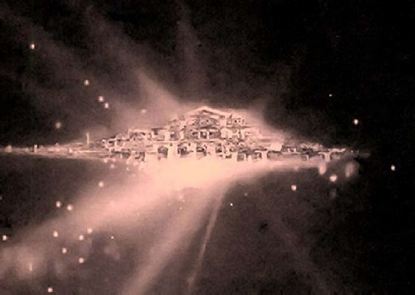По всем вопросам обращайтесь на: info@litportal.ru
(©) 2003-2025.
✖
SCIENCE AND TECHNOLOGY XXI: New Physica, Physics X.0 & Technology X.0
Настройки чтения
Размер шрифта
Высота строк
Поля
Such a reflexive, self-referent system of nature may include a great number of powerful loops, circles of causes, and networks of natural processes. But unlike the linear natural processes marked by linearity, irreversibility and equilibrium, the reciprocal and mutual processes and forcible natural interactions involve reversibility and convertibility, nonlinearity and disequilibrium, thus becoming the machinery driving the de facto universe as an ever-changing, dynamic and unstable but scientifically predictable new smart world x.0.
Thus, all the forces of nature are reversibly interrelated, tied together, or mutually dependent, reversing the order of action, position, time, and properties, including
gravity,
heat,
magnetism,
electricity,
electromagnetism,
radiation,
mechanical force,
nuclear force,
chemical force,
biological actions.
Why the Reversibility Law of Nature?
The Faraday’s intuitive belief in the unity of the forces of nature, or that all the forces of nature are but manifestations of a single universal force and must be convertible one into another, made possible the classical electromagnetic field theory, the first foundation of modern physics.
This contradiction is explained by the empirical, test-and-error methodology of physical science: “physics has evolved and continues to evolve without any single strategy”, while its ultimate goal to find a unified set of principles and laws governing force and energy, matter and change as motion at micro-, meso– and macro-world (Physical Sciences, the Encyclopedia Britannica, Knowledge in Depth, 1994).
Considering all that, we proposed a unified conceptual framework of physical phenomena defined as the Reversibility Theory pivoting the Force-Relationship, Reversibility, Convertibility and Unity (of Forces of Nature) and enabling a unified theory of physical forces and processes, as well as one single strategy of physical science.
It is providing the description of diverse physical forces and energies, processes and phenomena and the prediction of actions of physical forces and effects in the most systematic and consistent ways without having to resort to pure accidents and assumptions and guesses, and without considering the details of the courses of physical processes and systems.
The Principle of Reversibility combines all the key attribute of universal laws of nature: asserting the interdependence between varying quantities of physical properties; stating that physical events occur in an invariant order; enriching cause and effect relationships, and demonstrating a constant regularity in the relations or order of physical phenomena in the world, embracing the empirical regularities of numerous physical effects.
The reversibility properties of nature implies that everything in the physical world is converted and reversed, matter, energy, motion, and all physical phenomena (processes, effects, forces, interactions, reactions), from particles into anti-particles and matter into anti-matter, as quarks and leptons into antiquarks and antileptons, to all the known and unknown laws of physics. The symmetry properties of nature and the conservation laws following from them might also have the ground in the Reversibility Principle of Nature, like as the symmetry of action and reaction forces.
If the reversibility properties of nature and the convertibility of energy and unity of the forces of nature had been formulated as a universal principle and basic laws since the very beginning of modern physics, we'd have different physical science, more logical and systematic, predictive and productive, more esthetic and attractive, smarter or more intelligent and machine-wise.
As known, the Nobel Prize in Physics has been awarded 109 times to 201 Nobel Laureates between 1901 and 2015, according to the Nobel Foundation. And the key achievements lie in the serendipitous and intuitive and ingenious discovering of empirical physical laws and effects, as the Lorentz-Zeeman effects, the Doppler effect, the Einstein’s law of photoelectric effect, the Compton effect, the Cherenkov effect, the M?ssbauer effect, or the Hall effects, within 100 years incrementally enriched with the discoveries of subatomic entities, symmetry principles, conservation laws and increasingly generalizing force fields theories.
Above all, the Reversibility Law of Nature implies that if there is a physical effect in nature, there must be its inverse, converse or reversed action, otherwise it is not a real effect. The electromagnetic theory of light is all due to the Faraday’s ingenious conjecture: “if changing magnetic fields create electric fields, then changing electric fields might create magnetic fields”, being mathematized by Maxwell.
Simply put, if there are
the Faraday effect,
the Lorentz-Zeeman effects,
the Doppler effect,
the Einstein’s photoelectric effect,
the Compton effect,
the Cherenkov effect,
the M?ssbauer effect,
the Hall effects….,
there MUST be
Inverse Faraday effect,
Inverse Lorentz-Zeeman effects,
Inverse Doppler effect,
Inverse Einstein’s photoelectric effect,
Inverse Compton effect,
Inverse Cherenkov effect,
Inverse M?ssbauer effect,
Inverse Hall effects,…, just by LAW, the Law of Reversibility of Forces and Convertibility of Effects.
The interconnection of physical phenomena, convertibility of all physical forces, and reversibility of all physical entities and effects, all is enabling to create revolutionary intelligent applications, like as Encyclopedic Knowledge Base in Physics for General AI. (А. Ш. Абдуллаев; База знаний энциклопедического искусственного интеллекта: Об исследовательском прототипе энциклопедической системы по физике, Москва, ВИНИТИ, 1989).
MOST FUTURE TECHNOLOGIES AND INNOVATIVE APPLICATIONS WILL BE THE ENGINEERING PRODUCTS OF NATURAL SCIENCE XXI AND PHYSICS X.0 COMING FROM THE GENERAL REVERSIBILITY MECHANISM.
Technology X.0: Smart and Green Technologies: Reversible Machines and Universal Transformers
If science is the systematic study of the world, technology is generally viewed as the systematic study of techniques for changing the world, the human environment, by making and doing things, from simple machines to sophisticated technical innovations to complex machinery, as cars or airplanes.
Up to date to the universe of machinery consists of four major groups, as in:
physical machines;
instrumentation;
computing machines;
telecommunication systems.
All sorts of traditional machines and instrumentation come under the notion of devices capable to convert physical force and energy in any of its form, either mechanical, thermal, electrical, magnetic, nuclear, and chemical energy into mechanical energy, mechanical forces and motions, or vice versa.







